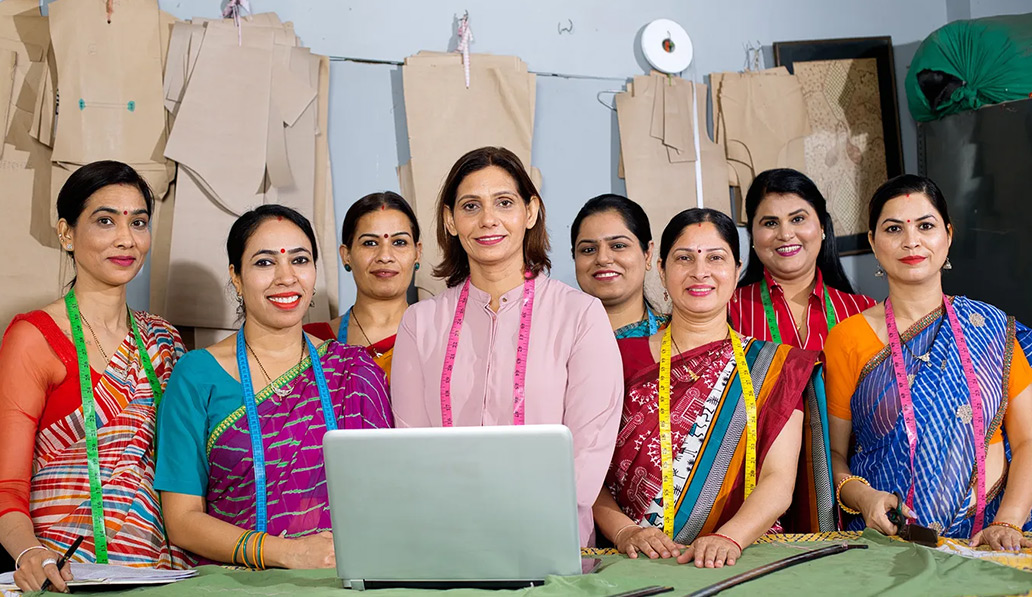Our Indian society now widely accepts the employment of women. The career of married and unmarried women has become a widely accepted phenomenon in their families.
Though educated people have changed their mindset about appreciating women having active careers, some conservative sections of our society do not want unmarried women to work.
During the era of the Industrial Revolution in countries like Great Britain, the United States, and continental Europe- there was a shift towards women’s employment. This shift brought women out of their homes to support the family. They had to work in elementary, minimum-wage jobs, be primary parents to their children, and run a household.
Fast forward to today, as women employment advanced in various fields, so did the education of women. Women now have educational qualifications to the highest degree and hold jobs of the highest stature. The new-age woman has become the very definition of a multitasker. Women are showing exceptional skills at managing their household, initiating co-parenting patterns that enable fathers to be equally involved in raising children, and encouraging husbands to share equal responsibilities in managing their homes. Thus, bringing equality in their lives, roles, and responsibilities.
Gender Ratio
We need to have more and more workplaces that support women’s employment. It is evident from A global survey conducted by the Peterson Institute for International Economics found that- of nearly 22,000 companies from 91 countries surveyed, organizations with women in at least 30% of leadership positions improved profits by 6% points over competitors with fewer or no women in leadership. Women are the untapped reservoir of talent, and they excel in all their roles with hard work and perseverance.
A gender-diversified workplace is having men and women hired based on their capabilities and qualifications consistently, paid equally, and given equal responsibilities with the same promotional opportunities. Over 54% of companies see improvements in creativity, innovation, acceptance, and enhance their company reputation from gender inclusivity.
Having a Diversified Workplace
- Attracts a broader pool of talent: Having men and women on the same team brings in more talent. It enhances productivity and innovation in the workplace.
- Multiple perspectives: Knowing the two sides of a coin establishes better opinions generated to a specific topic or concern at hand. Different perspectives come from having different background experiences challenge men and women on the team to arrive at innovative solutions.
- Increased Profit: According to McKinsey, Organizations with higher gender diversity are 21% more likely to experience above-average profits. And Organizations that have diversified cultural and ethnic executive teams are to encounter 33% better-than-average profits.
- Positive Culture: Having a gender balance at workplaces improves workforce diversity. Also, having a workplace culture that supports flexible time schedules for new mothers incites a motivating mindset that enables them to achieve objectives that brings success to the Company.
Many functions are male-centric in which women initially had no place for employment. Today, various industries strive to bring an all-women team to assess, initiate and complete products from commencement.
The MHE Sector is an example of a male-dominant industry believing the amount of physical labor was considered a difficult task for women to be a part of that field. However, today women are seen toiling as hard as their counterparts. Handling and operating Forklifts, particularly for Warehousing, Logistical Operations, and Factory Operations & Maintenance Procedures that had male predominance see women slowly and progressively taking over the niche. According to a survey, 1.9% of women are a part of the Plant and Machine Operating Industry.
In FRP Rod Manufacturing, women have started carrying out the whole process. They are mounting raw materials on spools, working on the product completion, and loading the finished product for dispatch and delivery.
Women today account for 19.9% of the total labor force in India, which is below the minimum compared to the Indian gender ratio of 2021, which is 1020 females to every 1000 males. Various reasons amount for women leaving the workforce. Reasons range from cultural norms and responsibilities that arise post-marriage, child-care, adult care, etc. Although this does not hold for everyone, data suggests most women discontinue their careers temporarily or permanently after childbearing. As these reasons are getting handled maturely, we are on the road to having a women workforce like men. A combined workforce at physical and intellectual levels enhances staff retention, improves collaboration, and enables an organization to attain solutions from an innovative viewpoint. Women’s employment does not only assure the right of employment for women but also will result in their greater economic independence. It will positively impact current socio-cultural norms followed in the country.




